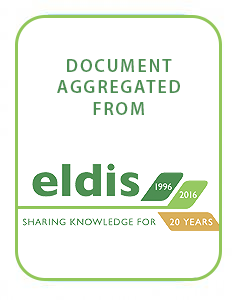Economics of land degradation in Niger
Land degradation poses daunting challenges to Niger and the country has designed several policies and strategies for combatting it. Building on work past studies, this study uses new satellite data which have higher resolution and run for longer time – thus capturing the longterm land management dynamics. This study also uses an improved cost of land degradation model which nets out benefits from land improvement as well analysing the impacts of land degradation on food and nutrition security.
LEGEND Land Policy Bulletin 12
This bulletin distils lessons from a sugarcane cooperative in Malawi and a forestry investment scheme in Sierra Leone, drawing on the five pillars of inclusive business as identified in the 2018 LEGEND state of the debate report.
Better Land Husbandry: Re-thinking approaches to land improvement and the conservation of water and soil
Soil erosion has conventionally been perceived as the chief cause of land degradation, yet the limited effectiveness and poor uptake of widely promoted physical and biological anti-erosion methods challenges this logic. An alternative perception focusing on prior land damage - notably to soil cover, architecture and fertility - permits an holistic, farmer-centred approach which has generated positive response to date.
Myths in Land Degeradation and Development
Water erosion is the most important degradation process of the 10 degradation processes distinguished by the European Union. The impact of rain drops on the soil surface causes splash of soil particles
Een bont patroon, vijf en dertig jaar cultuurtechniek. Opstellen bij het afscheid van prof.dr.ir. F.Hellinga
Afscheid prof. Hellinga
Land reclamation and water management : developments, problems and challenges : a collection of articles published at the occasion of I.L.R.I.'s silver jubilee (1955-1980)
Een verzameling artikelen, gepubliceerd ter gelegenheid van het 25 jarig bestaan van het ILRI te Wageningen.
Resultaten van grondverbeteringsproeven op zandgrond
De vochthoudendheid van zandgronden hangt nauw samen met het gehalte aan organische stof. Hoe meer organische stof hoe groter de vochthoudendheid. Om het organische stofgehalte in de ondergrond te verhogen is er eigenlijk maar één mogelijkheid, en dat is, er voor te zorgen dat bij de bewerking een gedeelte van de humeuze bovengrond met de ondergrond wordt vermengd. Spitfrezen of mengwoelen lijkt dan ook de voorkeur te verdienen boven een bewerking waarbij alleen het humusloze zand wordt losgemaakt zoals dat bij het woelen met een scherpe woeler het geval is.
A decade research in land and water management, 1957 - 1967
Publicatie n.a.v. 10 jaar ICW
De invloed van opgenomen zouten op de groei en productie van landbouwgewassen op zoute gronden
In some crops the quantity of absorbed salts proved to be strongly influenced by concentration in substrate, in other crops much less so. Ca proportion of total absorbed cations limited absorption, whereas salt uptake was favoured by higher temperatures.
The possibility of limiting absorption was less, the higher the proportion of Ca (or the relation divalent/monovalent cations) in the plant. Salt tolerance of crops seemed to be related to the relation Ca/other cations in the plant.




